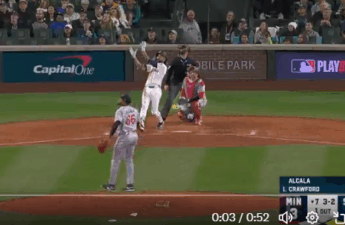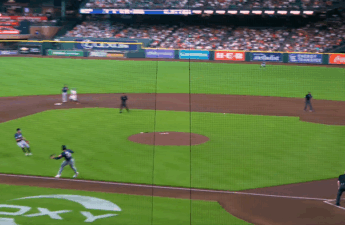Tuesday afternoon must’ve been pretty inspiring. Walking back from the subject of my last post, my mind was already fomenting the issues at play in this one. It’s probably a good thing that I don’t have more time to write posts at work anymore.
Walking in and out of the Tenderloin is always a surreal experience. It just doesn’t seem to make sense that an area so desperate can be surrounded by such wealth and privilege. The novel idea I had before Loosely Based (what I was actually working on [on and off] during my senior project in 1998) was to be called Blatant Contrast. The idea here was to discuss urban areas in America and how much of a stunning distinction there was between the existence of rich and poor who, often, were integrated on the same blocks and city streets.
While there was integration in Albuquerque, I’ve never seen so much segregation of groups as in San Francisco. Sure, a panhandler might wander down to the nearest BART station or the cable cars, but the Tenderloin generally seems to have invisible walls on all sides, girding in its residents where anything is acceptable and nothing is taking for granted. And yet a walk to lunch, or home, or just about anywhere takes you back to the promised land of California, one of the most expensive places in the world to live, the precious gold of the Barbary Coast.
And yet walking reminds one of one’s feet, one’s literal place in the world, one’s footing and setting and bearings. It certainly doesn’t hurt that I just went to India and have gotten a perhaps unprecedented context for the width and space of the world and how similar every place really is. The spirit ebbs and flows with time and space, but one’s same feet will find the same ground anywhere… anywhere there’s land. And the land may yield fruit or feed fowl or offer rocky rejection, but land is land is land. I have seen it all, and man, it’s all the same.
Of course the real lesson of the Tenderloin is a perfect illustration of how land is not the same, how no land in America (and much of the world) is treated the same as any other patch of land. “How much land does a man need?” Tolstoy asked, but that question never seems to limit the discussion here. Perhaps it’s “How much land can a person avoid getting foreclosed on?” Or “How much land can a credit card buy?” The question is really the same, especially if you’ve read the story (it’s excellent), but the perspective has just enough tweaks and bounces to make it seem different. The point is this, in a world where “Location, location, location” is perceived as the benchmark of selling real estate: every square inch of land is valued differently; every square inch of land is the same.
I understand all the arguments and I’m immersed in a culture that promotes this perspective. Land is where one lives, and where one lives determines everything. Being 20 seconds or 20 minutes or 20 hours from this or that good or service or access makes all the difference in how one lives one’s life. Fair enough, I can understand that perspective and how its valued. The relativity of it all. But the Tenderloin breaks that justification over its knee, since it’s nestled right in the heart of all these other valuable areas. Some definitions of the TL put it as small as 30 square blocks – a castle of poverty under siege from the forces of the gentry on all sides. The Tenderloin is just as close (or far) from all the same activities as everything on its border. And yet its land is worthless, while the same patch of asphalt and cement across the street might be among the most coveted on the planet.
I’m trying to get you to really think about this distinction and whether it makes sense. I haven’t lost my mind and forgotten all of the reasons that property values fluctuate and all the factors the people have been trained to take into account. I understand about the condition of property and the surrounding aesthetics and everything that goes into these calculations that millions of people devote their entire lives to manipulating. I’m asking you to roll back those assumptions, ingrained as so obvious, and really question whether this whole set of perspectives on land makes sense. Or is it simply the willing, overt suspension of disbelief?
Of course the contrast gets wider and more obvious when one looks at a place like India. Obviously one isn’t very close to the services available in San Francisco when one’s in India, but this latter locale is certainly no undesirable place. And yet the whole country, even the most valuable land in the nation, doesn’t come close to San Francisco prices. And even there, constant variation and the close proximity of worthless land and that which is highly valued, is the norm.
Or perhaps the example is best illustrated with land on the outskirts of some growing metropolitan area. Bear Canyon, for those New Mexicans who remember. Or the outskirts of Pleasanton perhaps. The same land, sitting there, can be worthless for decades, centuries, time immemorial. Valued only by lonely souls who seek solitude, or someone who planted their claim flag only after their horse got lost. And suddenly, almost overnight, as the city rolls out and the people roll in, the land is more valuable than it would have been had gold and oil both been uncovered ‘neath its crust.
This is the way the world is. But does it make sense? Is anyone here really valuing land, really understanding its capability and innate properties? Or is it simply the willing suspension of disbelief, to say that other people value something in this and that way, so I will too? That there’s nothing I could do to alter this perspective, so might as well get in line and aspire to the high end as well?
It always amazes me that believers in the so-called Invisible Hand, the only truly respected deity in modern America, have such a hard time imagining a world where people willingly ruled out violence and embraced pacifism. As though it were somehow more essential to human nature to blindly blithely trust the priorities of a marketplace than to avoid hurting one’s fellow person. Traditionally, it has been easier to persuade people to flee to selfishness and embrace the Hand than to make sacrifices for the betterment of society. But this is sort of like saying that it’s easier to reward six-year-olds for tearing toys away from their fellow first-graders rather than teaching them about sharing. While technically true, it sort of ignores the fundamental question at hand. And when it really comes down to it, humans are infinitely adaptable. This is both a strength (survival through adversity) and a weakness (almost unimaginable gullibility and willingness to follow). But people can be taught.
Because of course the same principle in play with land applies to currency itself. Or celebrity. People have created massive architectures around hierarchy and distinction and the elevation of some to the detriment of others. This has not been the path of least resistance… it has been the result of careful, extensive planning and manipulation and effort and work that, when combined with human adaptability, has yielded the societies you see today.
People tell you this piece of paper has value and you believe them. Why? Most fundamentally, because everyone else is running around believing them as well. Don’t think this is the justification? If you woke up tomorrow and everyone were effusively discarding paper bills, using them to wallpaper houses, wrap fish, light fires, and so forth, how would you react? Sure, for 24 hours, you might greedily grab all the cash that you could. Maybe even spend a week dreaming of the piles of paper that you had amassed, waiting for the tide to turn back. But it probably wouldn’t be much more than a month till you walked by 100’s blowing in the streets, or even started lighting some up on a cold night without kindling. You would adapt. You would adopt what’s being done around you, what you see.
And you tell me we can’t train people the same way to not kill each other? To willingly rule out any possibility of violence, or to put it on the same plane as burning stacks of $100-bills? Really?
I think this is where Hamlet should’ve been going (maybe was implicitly going) with the old “Nothing is either good or bad but thinking makes it so.” I’ve always detested that line because I believe, wholeheartedly and fundamentally, that moral distinctions are the only ones that transcend all this trivial human suspension of disbelief. Good and bad really do get past human solipsism and sophistry, to a world of God and morality and the higher order. But everything else? Sure. These things are entirely determined by a species almost obsessed with finding distinctions where none exist, with creating ways of valuing the same thing disparately. Think about how things are marketed. Every piece of advertising, fundamentally, comes down to this question. How can we get people to make phantom distinctions? How can we get people to overvalue the slightest distinctions? How can we divide people’s worldview into one of increasing gulfs between what arbitrarily “has value” and what equally arbitrarily “is worthless”?
If we spent the same energy and time on moral distinctions instead of “value” or “worth” distinctions, we’d have a whole new ballgame. And everyone would win.


